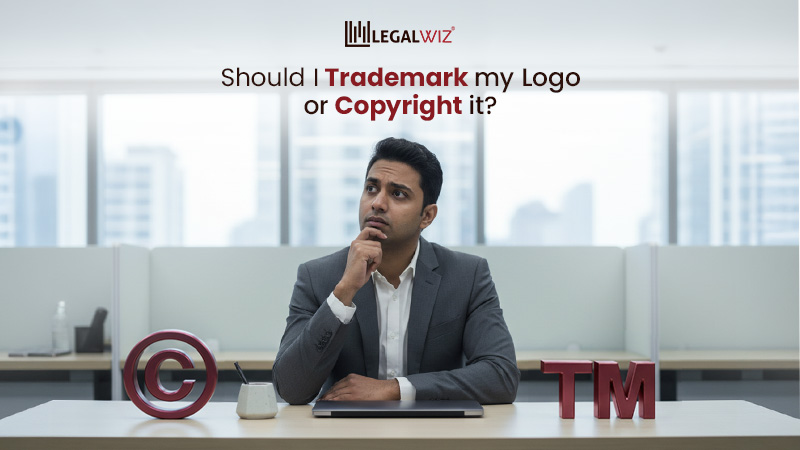All You Need To Know About Unconventional Trademarks in India
Overview
With changes in trade policies, many changes and legal concerns surfaced, especially from the perspective of intellectual property laws. Presentation of brand identity among consumers plays a major role in brand creation. Jingles, songs or stories related to the product can create a brand identity for its customers. Following the footsteps of the developed countries, many developing countries like India have made considerable changes to explore new avenues like the concept of Unconventional trademarks as a part of trademark registration in India. Popularly also known as the non conventional trademarks, these are growing more with the technological development and increasing competition in the nation. So, let’s delve into this concept of trademark and see what unconventional trademarks include.
What are unconventional trademarks?
Unconventional trademarks include a sound, color, shape, moving images or even smell. So, simply put, it is a concept of trademark that’s different from the rest of the types of trademarks. Moreover, it’s a very new and innovative addition to the seasoned concept of conventional trademarks in India. According to the laws, the function of a trademark is important. Besides, it is also important for a trademark to show distinguishing features between two products to obtain trademark registration. The TRIPS Agreement introduced the concept of registration of non conventional trademarks. Since then, many countries have tried to include unconventional trademarks in their respective Intellectual Property Laws.
Registration of unconventional trademarks is possible if it fulfills the requirements provided by the Indian trade marks law. One of the major characteristics of trademarks is that the trademark must be capable of showing a difference between two products. The proposed non-conventional trademarks must be distinctive and the same should be capable of graphical representation.
Also Read: How to register brand name in India
Definition of unconventional trademarks
In India, the Trademarks Act, 1999 does not specifically define the concept of trademarks as conventional and unconventional. However, many times, keeping the developments in mind, the courts of our nation have agreed to accept and register certain non conventional trademarks. Simply put, the unconventional trademarks include marks that are not covered under the typical conventionally registrable trademarks.
Also Read: Documents required for trademark registration
What are the key elements of non conventional trademarks?
The key elements of unconventional trademarks include the following:
Distinctiveness
The most integral characteristic to any mark being a trademark is distinctiveness. It must be distinctive enough to differentiate the activities of one person from the other.
Graphical representation
Another important feature of unconventional trademarks is that it must be capable of being geographically represented.
Types of non – conventional trademarks
We’ve been talking about the concept of non conventional trademarks for a while now. However, a fun fact is that even an unconventional trademark can be a different type. So, the following types is what unconventional trademarks include:
Sound marks
The Indian Trade Marks Act does not explicitly state that all sounds can enjoy trademark registration. However, in accordance with recent case laws any unconventional trademarks must be “capable of graphical representation” besides being capable of being distinct.
Therefore, the representation of unconventional trademarks is possible using a series of musical notes. As a new concept, courts state that unconventional trademarks such as a sound trademark will qualify, prima facie, for acceptance without evidence of distinctiveness.
If a sound has been able to establish its distinctiveness and the consumers recognize the brand through the sound like the start-up tunes of Nokia or Microsoft, then it qualifies for trademark registration in India. Yahoo!’s ‘Yodel’ is the first sound trademark that enjoyed trademark registration as a non-conventional trademark in India. Other examples of unconventional trademarks are as follows –
- Audi’s sound of the heartbeat
- ‘I’m lovin’ it’ of McDonalds
Also Read: Can i trademark my hashtag?
Colour mark
The concept of trademarks entail the marks that are meaningful, different and perceptible. You can sense colours by your visual senses and you can interpret the same to give a distinct meaning. Therefore, these types of trademarks are capable of trademark registration as unconventional trademarks. For example, the purple wrapper of Cadbury has been in use for ages and it has developed a secondary meaning. It is the feature from which people differentiate Cadbury from other chocolates.
But it’s very difficult to prove distinctiveness with the use of just one colour, hence usually it is easier to use multiple colours to get trademark registration of a colour mark.
Examples of popular unconventional colour trademarks are:
- Paytm Money’s renowned colour scheme (having registered trademark number 3684177 in Class 99)
- Cadbury’s unique purple colour (Colour shade – purple Pantone 2685C, having registered trademark number 4582308 in Class 99)
Also Read: Should I trademark my logo?
Shape marks
There can be a trademark registration for a unique shape of goods or packaging of a product that is capable of graphical representation. Another important thing is that the shape of the trademark must be different to the shape of the actual product. The shape of the packaging of the product should be different from the actual product as the other manufacturers or traders of a similar product may lose value if the shape is similar.
Shape marks as unconventional trademarks include:
- The popular curvy shape of Coca-Cola is one of the most popular unconventional trademarks in India. (having a registered trademark number 143652 in Class 32). Coca-Cola has multiple trademark registrations for unconventional trademarks.
- The world-famous Zippo Lighters enjoys trademark registration of a shape mark (having registered trademark number 714368 in Class 34 )
Scent/ olfactory trademarks
Unconventional trademarks such as smell/scent trademarks on the other hand are the toughest to register as, one can state its proximity to a smell like the smell of baked bread or a fish, but the exact description is almost impossible to convey in a written form.
Prerequisites of trademark registration of unconventional marks like scent trademarks are –
- The unconventional trademark have to have a graphical representation;
- The scent trademark should be capable of differentiating between multiple products.
The following are the points that determine the registrability of a scent mark:
- the applicant should be the only person marketing the goods concerned;
- the fragrance should not be an inherent attribute or natural characteristic of the goods, but a feature supplied by the applicant;
- the applicant should have emphasised and promoted the scent mark in advertising; and
- the applicant should be able to prove that customers, dealers and distributors of its products, recognize the applicant as the source of these goods.
The vital requirements related to trademark registration in India are difficult to fulfil as the Indian Trademarks Act, 1999 does not provide for a method of graphical representation for unconventional trademarks such as scent marks. Therefore, it is difficult to obtain successful trademark registration for such unconventional trademarks in India.
Also Read: When and why you should trademark your name?
Motion marks
A motion mark is an animated moving logo/ hologram that is adopted to expedite the marketing reach and attract consumer attention. If the mark can be represented graphically and fulfils the criteria of trademark registration, then there is no issue in pursuing trademark registration. Motion marks can be presented by showing a series of movements by arranging the images in a sequence and creating an illusion of movement. As in a motion mark, the motion and the succession of images are pivotal. The Microsoft logo that flutters like a flag is an example of one such registered motion mark. Some examples of unconventional trademarks related to motion concept of trademark in India are as follows –
The first motion mark in India was granted to Nokia Corporation. (having registered trademark number 1246341 in Class 99)
Another registered motion trademark in India is Toshiba’s movement trademark (having registered trademark number 4093005 in Class 99)
Conclusion
To summarise we can say that there is not much difference in the registrability requirements of conventional and non-conventional trademarks. Moreover, you can even trademark a slogan. The main concern is regarding their representation. It is not possible to define or graphically represent unconventional trademarks. However, if any unconventional trademark is distinctive and consumers can recognise them then the same can be registered as a trademark. New approaches and principles to concept of trademark are required to be adopted to keep pace with the emergence of new types of signs and to ensure coherence with other fields of intellectual property protection like copyright and design.
Frequently Asked Questions
What is an example of an unconventional trademark?
The unique colour scheme of Mcdonalds, Yahoo’s Yodel, and the shape of coca cola bottle are all examples of unconventional trademarks in India.
Can I register an unconventional trademark in India?
Yes, you can definitely register your unconventional trademark in India. However, it must be capable of graphical representation and must have distinctiveness from other services and products in the similar category.

Rohan Sharma
Rohan Sharma is a lawyer with a flair for writing. Rohan has a special interest in the domain of Intellectual Property Rights and possesses an extensive experience in the fields of trademarks, copyrights and industrial designs. Aiming to understand the intricacies of law as a concept and its symbiosis with advancing technology and changing societies, the author seeks to examine the nuances of law.
3 Comments
Leave A Comment








I actually added your blog to my favorites and will look forward for more updates. Great Job, Keep it up. First of all let me tell you, you have got a great blog .I am interested in looking for more of such topics and would like to have further information. Hope to see the next blog soon.
It is really a great and helpful piece of information. I’m satisfied thatyou simply shared this useful information with us.Please stay us informed like this. Thanks for sharing.
Thank you so much for the post you do and also I like your post. Now a days trade mark registration is on demand as people need this for more service of lawyer attorney. Recently I have also registered UK trademark at Regimark SIA and really its very good.